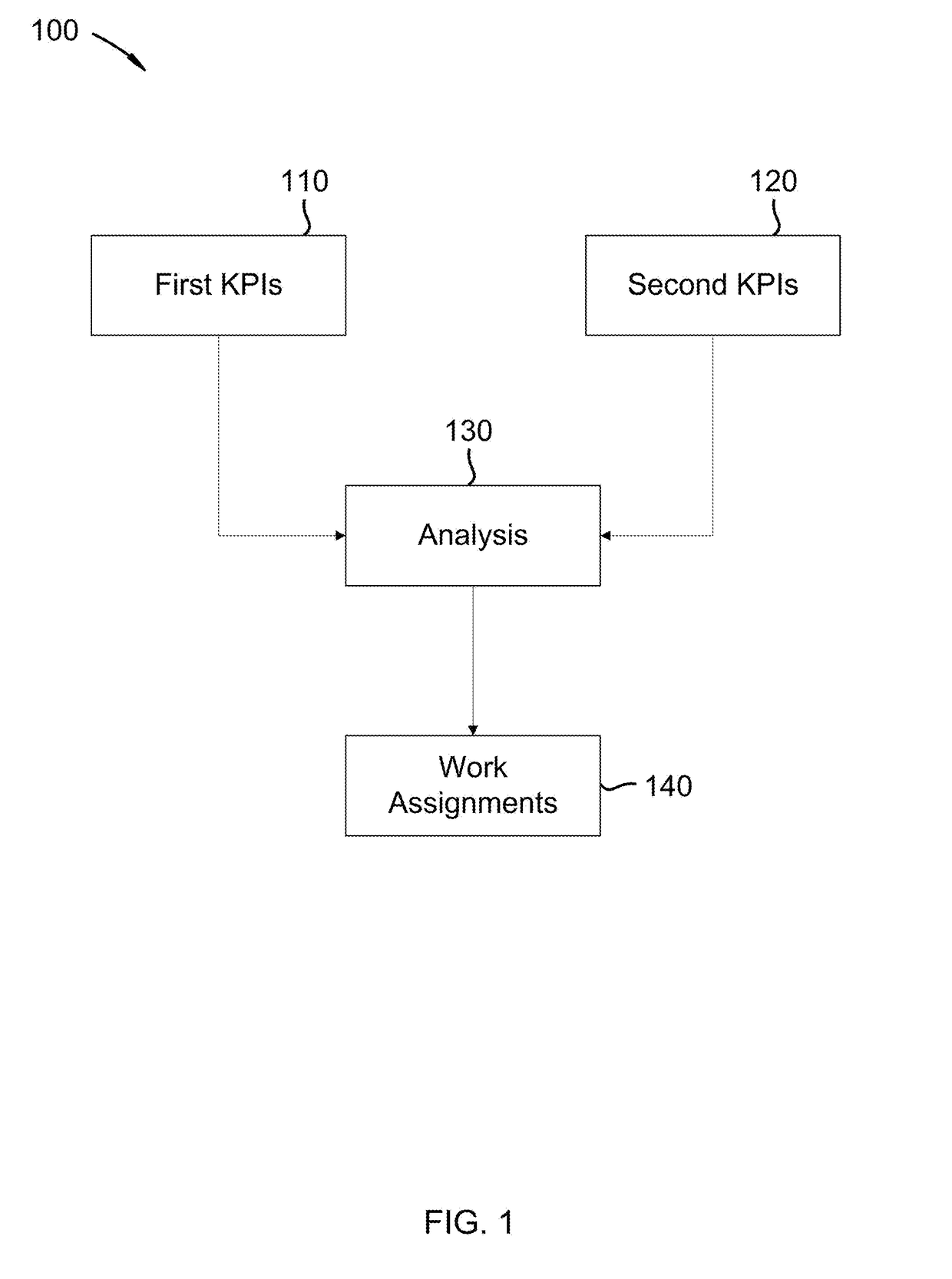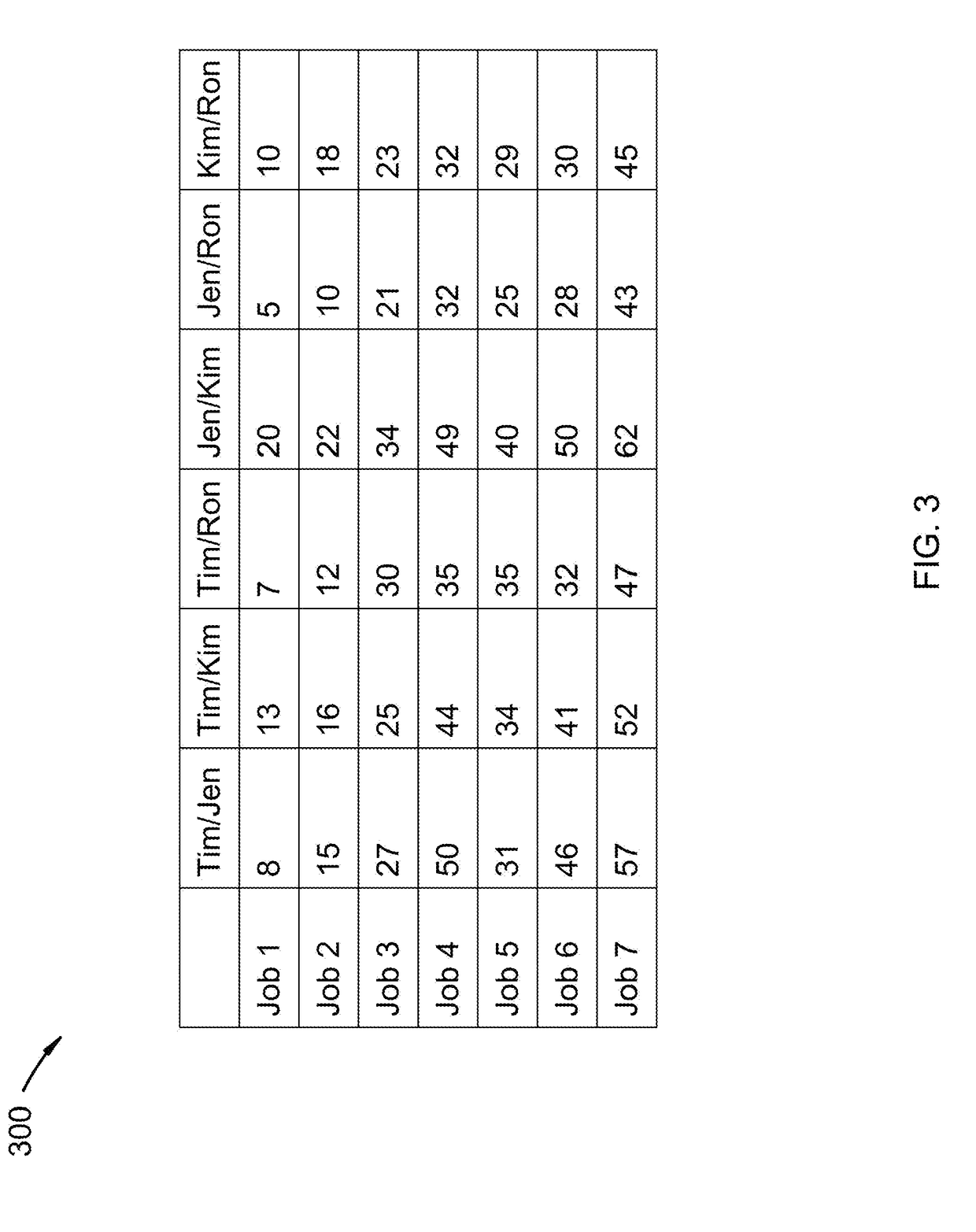Method for Optimizing Employee Work Assignments
a technology for optimizing work assignments and employees, applied in the field of optimizing work assignments, can solve problems such as energy loss, contention among employees, and distractions of unoptimized employees, and achieve the effect of removing any ill feelings of employees
- Summary
- Abstract
- Description
- Claims
- Application Information
AI Technical Summary
Benefits of technology
Problems solved by technology
Method used
Image
Examples
Embodiment Construction
[0023]FIG. 1 shows generally, at 100, a system and method for optimizing employee work assignments in accordance with an embodiment of the invention. First KPIs (key performance indicators) 110 are metrics of performance of an employee. KPI metrics 110 may include sales, work quality, production level, service level agreement, project management, marketing, employee relations, time to complete work, work completed in a given amount of time, an amount of time spent in a workplace or on a given task, customer satisfaction, punctuality, customer acquisition, customer attrition, customer satisfaction, employee satisfaction, time to complete a specific work assignment, an amount work completed in a given amount of time, customer service, and employee innovation / problem solving. Second KPIs (key performance indicators) 120 are metrics of performance of two or more employees working in a group, shift, team, or cooperative joint work effort. KPI metrics 120 may include sales, production amo...
PUM
 Login to View More
Login to View More Abstract
Description
Claims
Application Information
 Login to View More
Login to View More - R&D
- Intellectual Property
- Life Sciences
- Materials
- Tech Scout
- Unparalleled Data Quality
- Higher Quality Content
- 60% Fewer Hallucinations
Browse by: Latest US Patents, China's latest patents, Technical Efficacy Thesaurus, Application Domain, Technology Topic, Popular Technical Reports.
© 2025 PatSnap. All rights reserved.Legal|Privacy policy|Modern Slavery Act Transparency Statement|Sitemap|About US| Contact US: help@patsnap.com



